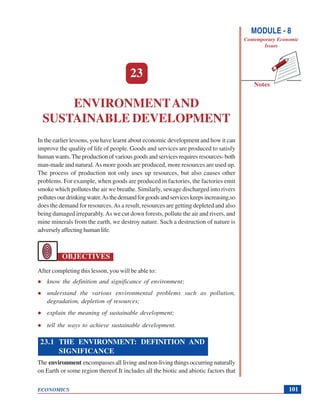The document discusses various environmental issues like pollution, depletion of resources, and sustainability. It defines the environment and explains the significance of different components. It then describes several types of pollution including air, water, and noise pollution. For each type of pollution, it provides the effects and sources. The key points made are that human activities are putting pressure on the environment by polluting natural resources and using them faster than they can replenish, which poses risks to the sustainability of life and resources for future generations.












